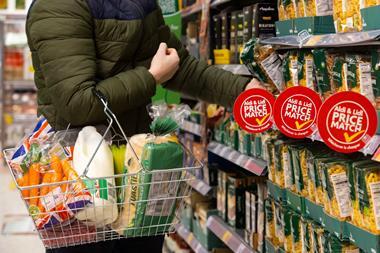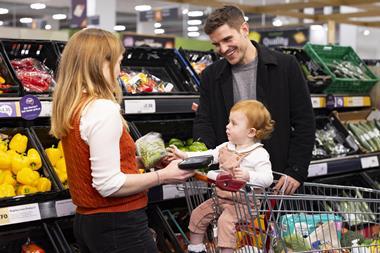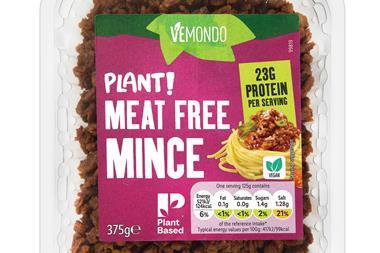Meat prices haven't reflected the falling costs of commodities and the situation isn't about to change. Why, asks Mintec analyst Robert Miles
Meat lovers could have been forgiven for thinking the drop in commodity prices would have brought a similar fall in the price of the proteins on retail shelves.
After all, the cost of wheat has fallen 27% in the past year, soya oil is down 20% and crude oil 48%. But meat has not followed suit.
But many of the costs seen in the UK meat market - including fertiliser, machinery and feed - are bought in foreign currency, and over the past year sterling has fallen 13% against the euro and 25% against the dollar.
The pressures of disease and disease eradication have also been a factor in increasing costs and decreasing supply, while the ageing farming population means primary producers are in shorter supply.
But the biggest factor is the time lag. Meat represents a substantial investment by the producer. The farmer's decision to raise an animal for slaughter involves a major commitment in infrastructure as well as in the input costs for feed, fertiliser and fuel. With the time lag between inputs and outputs often being so long, infrastructure and actual contract timescales mean it can take two years to produce beef for market and six months for lamb and pigs, although it only takes about six weeks for a chicken.
There is very little, therefore, that a farmer can do if a production cost suddenly increases. Usually they are left to absorb the extra cost, and hope to recoup it somewhere further down the line. That time is now.
In general the UK demand for meat is fairly stable. Overpriced meat does not sell well, and consumers have alternatives and can often shop around and buy it cheaper elsewhere. If the price increases by a little or moves up only in small increments, most consumers can afford to pay a little extra. Alternatively they can buy a little less, switch to cheaper cuts or even change to cheaper meats.
However if the price increases a lot, and does so over a relatively short period of time, it can lead to reduced demand, particularly from the less well off.
As fresh meat does not have a long shelf life, it eventually has to be sold at whatever the going market rate is. The likelihood is that if producers consistently get less than they can afford, overall production will have to be reduced, or a crisis point will be hit and production will cease altogether.
As the most obvious alternative to the domestic market, producers can export and with a weak currency, excellent market opportunities are opening up. In time we may see many of our choicest cuts of meat going abroad, since that is where there may be both the demand and the money to pay the price.
So we may find ourselves waiting a bit longer for meat prices to fall. We are still waiting to have last year's high costs washed out of the system, we don't know where the pound is likely to go and farmers still need the incentive to produce meat during these times.
Meat lovers could have been forgiven for thinking the drop in commodity prices would have brought a similar fall in the price of the proteins on retail shelves.
After all, the cost of wheat has fallen 27% in the past year, soya oil is down 20% and crude oil 48%. But meat has not followed suit.
But many of the costs seen in the UK meat market - including fertiliser, machinery and feed - are bought in foreign currency, and over the past year sterling has fallen 13% against the euro and 25% against the dollar.
The pressures of disease and disease eradication have also been a factor in increasing costs and decreasing supply, while the ageing farming population means primary producers are in shorter supply.
But the biggest factor is the time lag. Meat represents a substantial investment by the producer. The farmer's decision to raise an animal for slaughter involves a major commitment in infrastructure as well as in the input costs for feed, fertiliser and fuel. With the time lag between inputs and outputs often being so long, infrastructure and actual contract timescales mean it can take two years to produce beef for market and six months for lamb and pigs, although it only takes about six weeks for a chicken.
There is very little, therefore, that a farmer can do if a production cost suddenly increases. Usually they are left to absorb the extra cost, and hope to recoup it somewhere further down the line. That time is now.
In general the UK demand for meat is fairly stable. Overpriced meat does not sell well, and consumers have alternatives and can often shop around and buy it cheaper elsewhere. If the price increases by a little or moves up only in small increments, most consumers can afford to pay a little extra. Alternatively they can buy a little less, switch to cheaper cuts or even change to cheaper meats.
However if the price increases a lot, and does so over a relatively short period of time, it can lead to reduced demand, particularly from the less well off.
As fresh meat does not have a long shelf life, it eventually has to be sold at whatever the going market rate is. The likelihood is that if producers consistently get less than they can afford, overall production will have to be reduced, or a crisis point will be hit and production will cease altogether.
As the most obvious alternative to the domestic market, producers can export and with a weak currency, excellent market opportunities are opening up. In time we may see many of our choicest cuts of meat going abroad, since that is where there may be both the demand and the money to pay the price.
So we may find ourselves waiting a bit longer for meat prices to fall. We are still waiting to have last year's high costs washed out of the system, we don't know where the pound is likely to go and farmers still need the incentive to produce meat during these times.



















1 Readers' comment